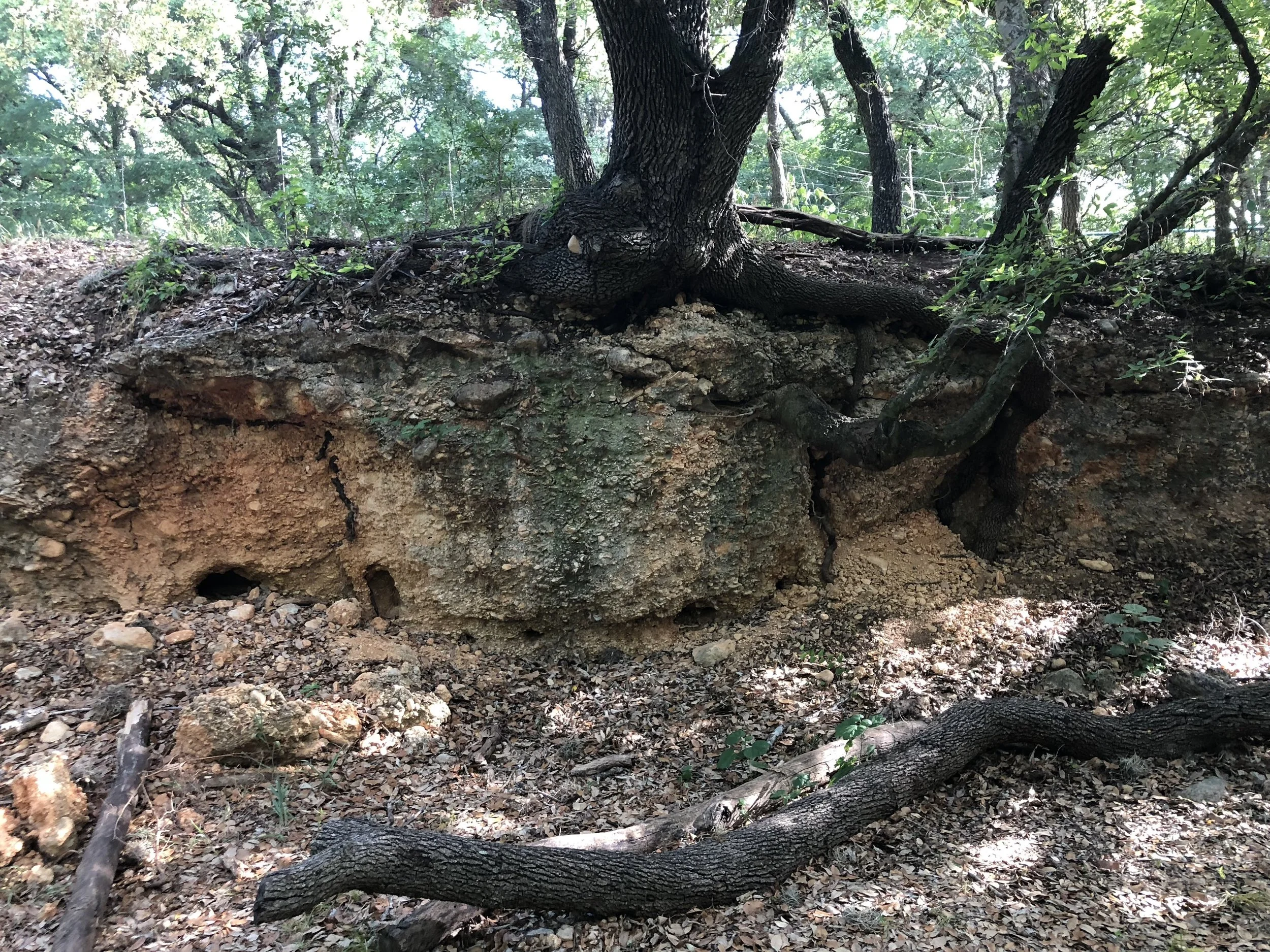Walking around Phil Hardberger Park and the Geology Trail located within it, an interesting juxtaposition of geologic time can be noticed
By Ethan Bucholz
While the geologic events occurring here are nowhere near as powerful as what created the Himalayas or as violent as a volcanic eruption, they are integrally important for visitors trying to decode the history of this landscape. Take the time to look at your surroundings. While man’s hand on the situation is inevitably visible, this park is a close representation of the natural state of this area when it was devoid of human activity.
The main bedrock in the area is limestone, specifically that of the Buda Limestone formation, dating back to the Cretaceous Period. On top of that limestone are more contemporary deposits. The borrow pit demonstrates this. What makes it all so interesting is the fact that these small clues give us an insight to the past, as well as an insight to the present.
Limestone deposits represent a time in the Earth’s history when massive outpourings of lava (such as the Deccan Traps in India and the Laramide Orogeny) created mountain-building events which helped form the Colorado Plateau and our modern Rocky Mountains. These events may have contributed a significant source of carbon dioxide to the atmosphere and caused a global rise of the sea. This transgression of the sea formed a massive interior seaway known as the Cretaceous interior seaway which extended from Hudson Bay, down through the Great Plains and the Rocky Mountains and across the whole of Texas. Deposits of this transgression, like the Buda Limestone found at Phil Hardberger Park, represent a vast global change and a time of great deposition of marine sediments.
Some of these sediments can be found on the highest peaks of the Rocky Mountains while others are in this beautiful park in San Antonio. This limestone--while not the strongest-- has interacted over millions and millions of years with freshwater, creating the numerous caverns and cave formations that can be found throughout Texas and bordering states. When water interacts with calcite it re-works the chemistry of the rock and creates passageways that expand over time to form gorgeous caverns found worldwide. This feature of the landscape is generally referred to as “Karst Topography.” The numerous ephemeral and intermittent stream channels that snake their way across the park are continuing to work upon the eroding limestone.
The borrow pit is a small look into the fluvial nature of the Park today. It was underwater during the Cretaceous Period, but in more modern times rivers and streams have dominated the landscape. No longer are there deep oceans and shallow seas in this area to deposit old marine life, but instead new rivers and streams carve and deposit sediments of their own. Looking at the borrow pit and the many clasts that can be seen in the walls along with the red color of the soils surrounding, one may surmise that this is a terrestrial and a fluvial system. During times of flooding, sediments and larger pebbles have been deposited. We know that they were deposited in a river or stream because they are so rounded. These are not breccia fragments with jagged edges, but rather rounded pebbles giving us the hint to their origin.
Over time, these deposits have been re-deposited by larger, more kinetic and scouring floods and then cemented together by mud and fine particles when flooding is less severe. The overlook is a very good representation of this. On one side, the water is cutting deeper and deeper into the cliff face while on the other sediments are deposited mostly by slack water. The fluvial transition the park area has seen in the past few million years is evident even in the areas where there are only boulders. These limestone boulders are remainders of the bedrock after the wind and water eroded its surface.
The next time you walk on the Geology Trail in Hardberger Park, take notice of these clues left for us by nature. For it is by examining the past that we have a better view of our role in the grand scale of time.








